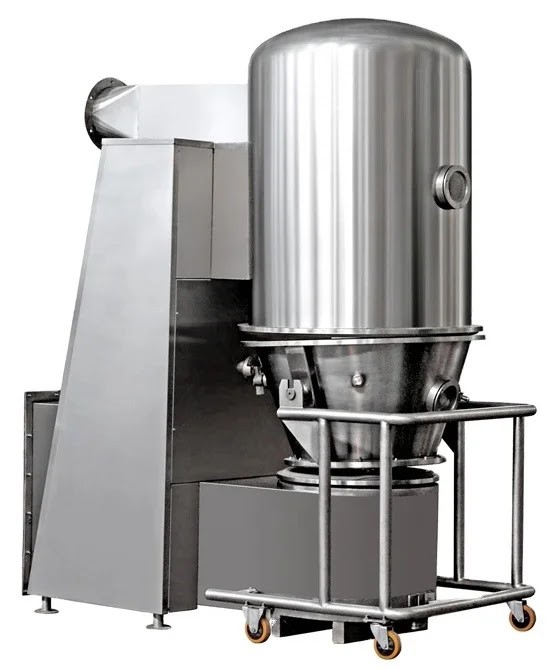Introduction
In modern industries, efficient drying solutions are essential for processing materials quickly and uniformly. One of the most advanced drying technologies available today is the Fluid Bed Dryer. Used widely in pharmaceuticals, food processing, and chemical industries, fluid bed dryers offer high efficiency, uniform drying, and energy savings. But how exactly does a fluid bed dryer work? This comprehensive guide will explain its working principle, applications, advantages, and key considerations for optimal performance.
What is a Fluid Bed Dryer?
A Fluid Bed Dryer is a drying device that uses a controlled flow of hot air to suspend and dry solid particles. The technology ensures even drying by allowing each particle to be surrounded by heated air, significantly improving heat and mass transfer efficiency.
Key Components of a Fluid Bed Dryer:
-
Air Handling Unit – Provides heated air to dry the material.
-
Fluidization Chamber – Where the drying process takes place.
-
Distributor Plate – Ensures even airflow distribution.
-
Exhaust System – Removes moisture-laden air.
-
Control Panel – Manages airflow, temperature, and drying time.
Working Principle of a Fluid Bed Dryer
The fluid bed drying process involves several steps:
1. Loading the Material
The wet material, usually in granular or powdered form, is loaded into the drying chamber of the fluid bed dryer.
2. Airflow and Fluidization
A fan blows heated air through the perforated distributor plate at the bottom of the drying chamber. The velocity of the air is controlled to lift and suspend the particles, creating a "fluidized state."
3. Heat and Mass Transfer
Once the material is fluidized, the hot air efficiently transfers heat to the particles. Simultaneously, moisture from the material evaporates into the air stream.
4. Moisture Removal
The exhaust system removes the moisture-laden air, ensuring a continuous drying process.
5. Cooling and Discharge
After reaching the desired moisture level, the material undergoes a cooling phase before being discharged for further processing or packaging.
Applications of Fluid Bed Dryers
Fluid bed dryers are used across multiple industries due to their efficiency and reliability.
Pharmaceutical Industry
-
Drying of powders used in tablet production.
-
Granulation drying for uniform particle size distribution.
Food Industry
-
Drying of food powders such as milk powder and coffee.
-
Processing of cereals, grains, and spices.
Chemical Industry
-
Drying of chemical powders and crystals.
-
Removal of solvents in chemical formulations.
Agriculture and Fertilizers
-
Drying of agrochemicals and fertilizers.
-
Processing of seeds for improved shelf life.
Advantages of Using a Fluid Bed Dryer
1. Uniform Drying
The fluidization process ensures all particles are exposed to the same drying conditions, reducing inconsistencies in moisture content.
2. Fast Drying Process
Compared to conventional drying methods, fluid bed dryers reduce drying time significantly due to efficient heat transfer.
3. Energy Efficiency
By optimizing airflow and heat distribution, these dryers consume less energy while maximizing drying output.
4. Scalability
Available in different sizes, fluid bed dryers can be used for small-scale laboratory applications or large industrial operations.
5. Reduced Material Degradation
The gentle drying process prevents material breakdown, ensuring product quality is maintained.
6. Customizable Controls
Advanced control systems allow users to adjust temperature, airflow, and drying duration to meet specific processing needs.
Key Considerations for Optimal Performance
To ensure efficient operation of a fluid bed dryer, consider the following:
1. Airflow Velocity
The air velocity must be carefully adjusted to avoid particle segregation or excessive entrainment.
2. Temperature Control
Maintaining the correct temperature prevents overheating and degradation of heat-sensitive materials.
3. Moisture Content Monitoring
Regular monitoring helps achieve the desired drying levels without over-drying or under-drying.
4. Regular Maintenance
Cleaning and inspecting components such as the distributor plate, filters, and exhaust system enhance performance and longevity.
5. Material Compatibility
Different materials respond differently to fluidization; ensuring compatibility prevents issues like agglomeration or excessive fines loss.
Conclusion
A Fluid Bed Dryer is a highly efficient drying solution that provides uniform drying, reduced energy consumption, and faster processing times. Its working principle, which involves fluidization and continuous heat and mass transfer, makes it a preferred choice across industries like pharmaceuticals, food, chemicals, and agriculture. By understanding its operation, applications, and best practices, industries can optimize their drying processes and enhance product quality. Investing in a high-quality fluid bed dryer can significantly improve productivity, making it an essential piece of equipment in modern manufacturing.




